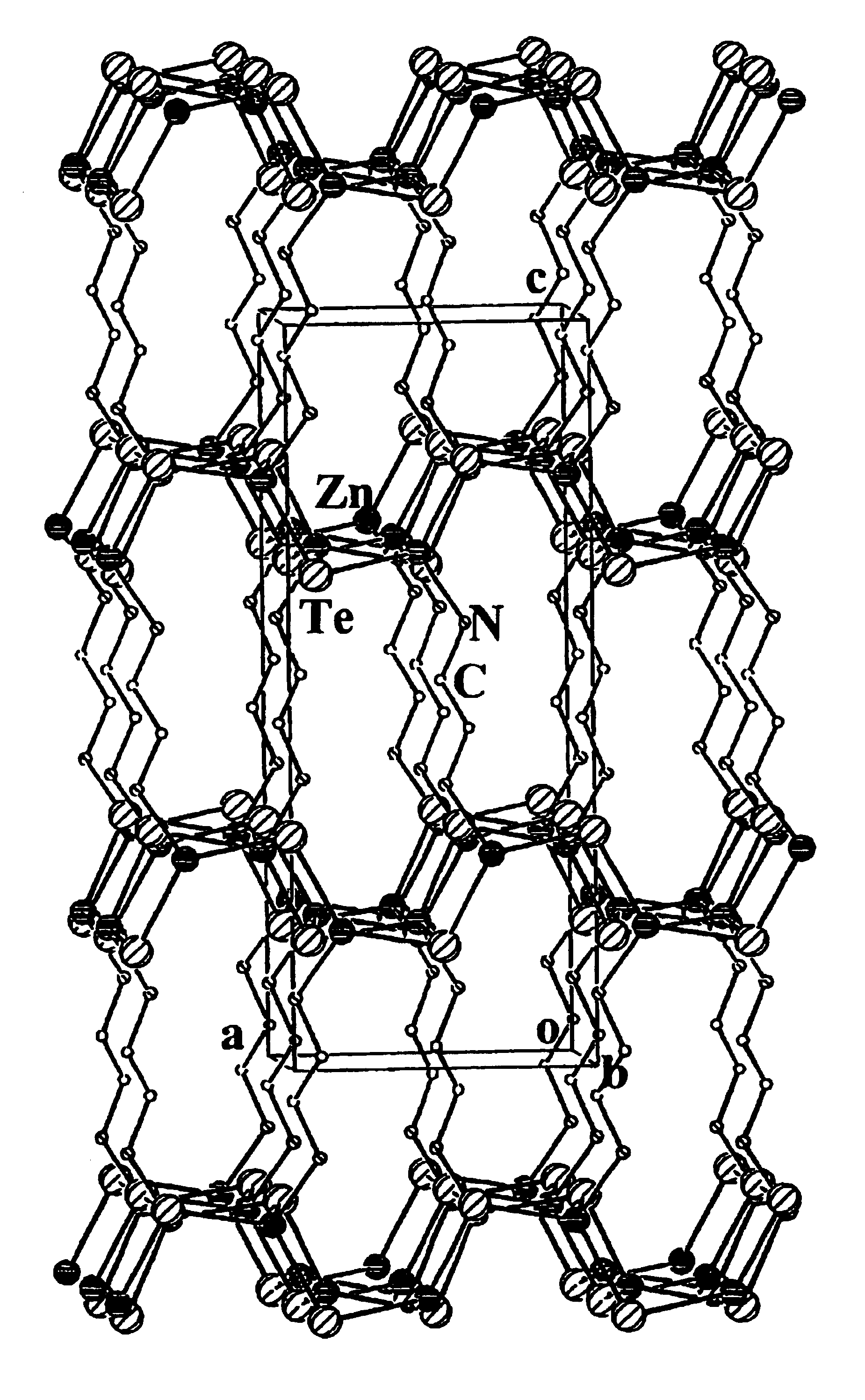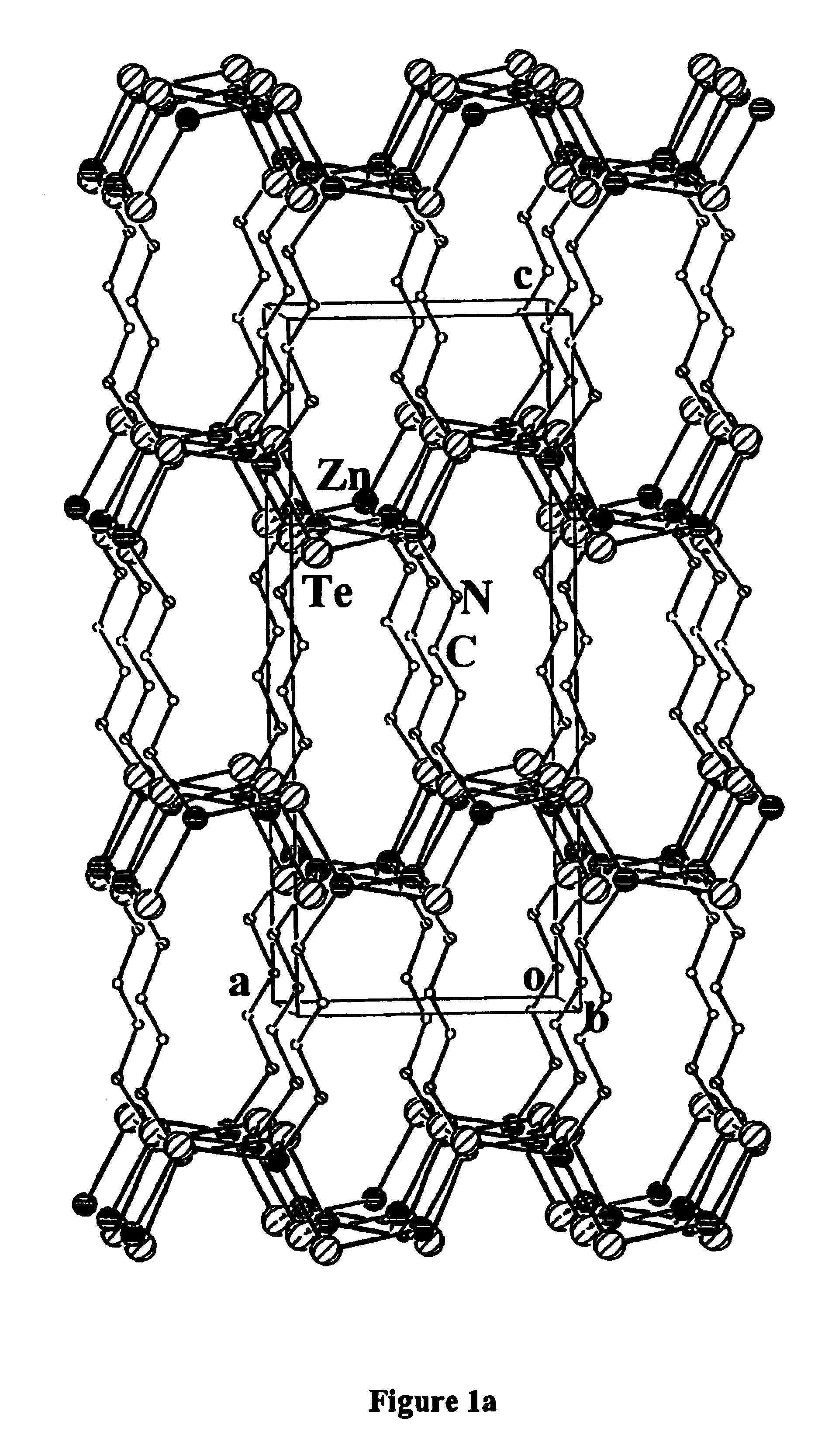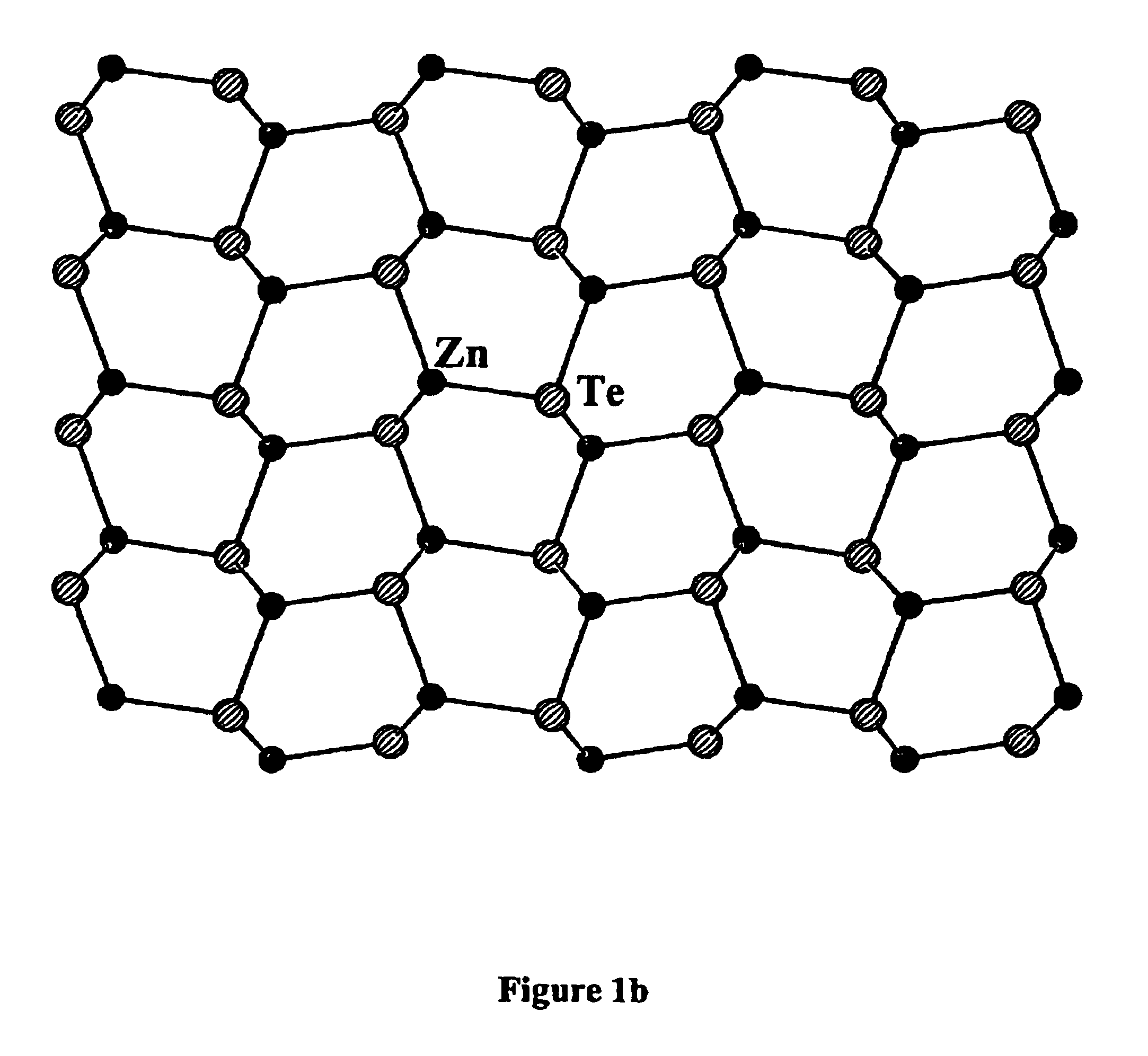Hybrid nanostructured materials based in II-VI semiconductors
a technology of nanostructured materials and semiconductors, applied in the field of organic-organic-organic hybrid composites, can solve the problems of restricting use and several limitations in the ability to change optical properties, and achieve significant quantum confinement effects and advantages for device making
- Summary
- Abstract
- Description
- Claims
- Application Information
AI Technical Summary
Benefits of technology
Problems solved by technology
Method used
Image
Examples
example 1
Preparation of [α-ZnTe(Ethylenediamine)1 / 2] I
[0042]To a 23 mL acid digestion bomb was charged 0.272 g ZnCl2 (2 mmol), 0.128 g Te (1 mmol) and 6 mL ethylene-diamine. The mixture was allowed to react at 200° C. for a period of three days. A solid product was collected, washed with 30 and 80% ethanol, and then dried in anhydrous ethyl ether giving brownish column-like crystals of the title compound in 90.0% yield.
example 2
Preparation of [β-ZnTe(Ethylenediamine)1 / 2] II
[0043]A reaction mixture of 0.595 g Zn(NO3)2.6H2O (2 mmol), 0.128 g Te (1 mmol), and ethylenediamine (6 mL, 90 mmol) was heated in a 23 mL acid digestion bomb at 190° C. for three days. A solid product was collected, washed with 30 and 80% ethanol, and dried in anhydrous ethyl ether, affording brownish platelike crystals of the title compound (92.4% yield).
example 3
Preparation of [ZnTe(1,3-Propanediamine)1 / 2] III
[0044]The title compound was prepared as in Example 2 with the exception that 1,3-propanediamine (5 mL, 60 mmol) was used in place of ethylenediamine and the reaction temperature was 200° C. The title compound was obtained in 91.3% yield.
PUM
 Login to View More
Login to View More Abstract
Description
Claims
Application Information
 Login to View More
Login to View More - R&D
- Intellectual Property
- Life Sciences
- Materials
- Tech Scout
- Unparalleled Data Quality
- Higher Quality Content
- 60% Fewer Hallucinations
Browse by: Latest US Patents, China's latest patents, Technical Efficacy Thesaurus, Application Domain, Technology Topic, Popular Technical Reports.
© 2025 PatSnap. All rights reserved.Legal|Privacy policy|Modern Slavery Act Transparency Statement|Sitemap|About US| Contact US: help@patsnap.com



